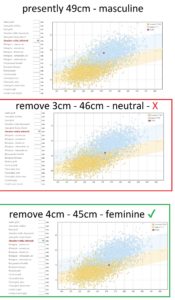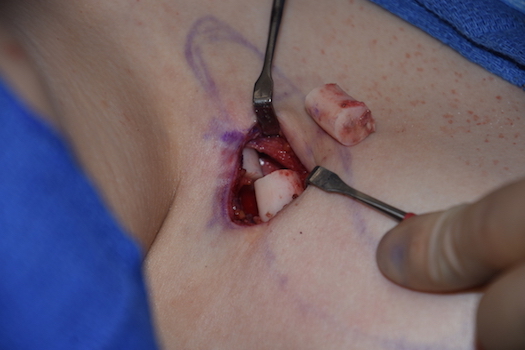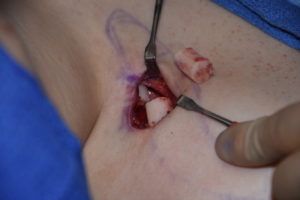Shoulder feminization surgery is done by surgical shortening of the clavicles. (clavicular reduction osteotomies) Since clavicles provide horizontal spacing between the sternum and the shoulder, it is easy to see how shortening their length provides reduction in bideltoid shoulder width measurements and appearance. Even though the clavicle is not a pure horizontal rod of bone, shortening its lazy S-shape still primarily produces a horizontal width reduction effect.

Patients not infrequently ask whether more can be taken and this is a question that can be answered two ways….1) At what point in clavicle reduction will shoulder function be affected, and 2) at what shoulder width does it appear feminine? From the orthopedic literature looking at clavicle fractures, the general range of around 30% or greater loss of clavicle length can begin to affect shoulder function and stability. So based on this criteria the number of up to 3.5cms would be considered safe. (25% length reduction)

Classic length reductions of 2.5cms per side have proven to result in uncomplicated healing with no evidence of bony non-unions or shoulder dysfunction in my experience. Based on body size it may be that 3cms per side may be more considered in taller/larger patients.
Dr. Barry Eppley
Indianapolis, Indiana




